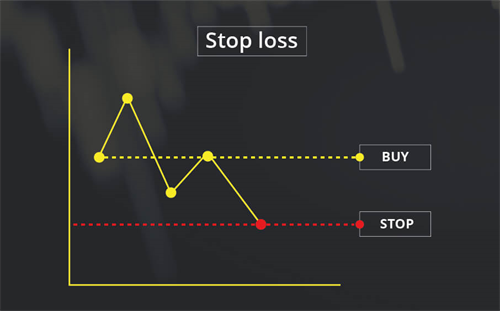A stop-loss order is an order (trade order) on an exchange that will limit your losses from strong losses, but using a stop-loss you still make a loss, albeit smaller than liquidating a position or locking in after a strong move against you. Stop Loss, which is translated from English as “stop loss”.
It is said that stop-loss order is the most unpopular order among beginners, you might hate it at first, but in time you will be glad you have this great tool.
Example of a Stop Loss tool:
You buy an asset for 100 conventional units and expect to sell it for $130, but the price goes against you and the next day the asset is worth $70 and you are down 30%. To prevent this from happening you can place a stop-loss order (sell order) at a price of 90 CU, and then the exchange will automatically fix your loss at 10% of the deal, even if you are offline, when you are busy with other things and are not watching your deal. The pluses are obvious – less loss and the ability to enter a new trade at a new price, rather than sitting at a loss with your money frozen.
Here there is a slight and rare minus, the price can get to a price of 90 c.u. and go back up, but my observations of statistics in 80% of cases the price will fall further after reaching the stop-loss and save you from loss, so a stop-loss is needed – always!
There is one BUT, in theory you can get 20 or 30 stop-losses in a row and there will be losses. Stop-loss must be able to set it correctly, but most importantly, it is the right point of entry into the transaction, based on which you expect in the future where to place your stop-loss order. I am telling you how to find the right entry point in my educational course on trading on cryptocurrency market.
In 90% of all cryptocurrency market trading terminals, where you can put a stop loss order, there are 2 types of stop loss orders, Limit and Market, let’s analyze their features and differences.
Limit Stop Loss Order
Limit Stop Loss order is set at a specific price level and is triggered when the price reaches this level, but you can fully realize the sale only if the Stock (Exchange list of orders to buy and sell) will be enough demand to buy, ie will be enough volume to buy from the buyer to redeem your order completely.
This nuance is the main advantage, the main problem and the main risk of using such a Stop Loss.
The advantage is that you are guaranteed to exit at the specific price you set yourself.
The problem is that if there is not enough volume at the price you set to close the trade completely, the order might not trigger completely or might trigger partially, for instance with half of the volume. To explain this phenomenon, in trading the term “slippage” is used.
The risk is that the Stop-loss order, which is supposed to insure you when you cannot physically close the position or even monitor your position, eventually does not trigger and if the price moves further you can incur heavy losses.
For these reasons, it makes sense to use a Limit Stop Loss only when there is sufficient liquidity in the trading pair in which you enter the trade and only when you are sure that you will not be subject to a rally in the opposite direction of your expectations.
Market Stop Loss Order
Market Stop Loss order is placed at a specific price level and is triggered when the price reaches that price level, and your position is sold at any possible price after the price level you specified has been reached. This phenomenon is also referred to as “taking the market down” or “dumping the market”, meaning that your trade is completely closed. In this case, the price level at which you have set the stop-loss serves as a signal to action.
When using this type of order, you exclude possibility of “slippage”, which can happen at cryptocurrency market pretty often due to lack of necessary liquidity or because of abnormal volatility, but also you should clearly understand that at increased volatility and in case of price rally at chart in opposite direction to your expectations, you can get higher loss than you planned while placing Market Stop Loss order.
There is no golden mean among the types of Stop Loss orders, you have to choose what is more important for you, I recommend always using Market Stop Loss orders for Margins and Futures trading and using Limit Stop Loss orders for Spot or Altcoins trading if possible, but you should always take into account the specific trading pair, especially its actual liquidity at the time of the trade.
Stop Loss to Breakeven
As soon as the price moves in accordance with your expectations, I recommend you always (in the case of Margin and Futures trading, on the spot situationally), manually move your Stop Loss order to Breakeven (BOO). I usually do it after 1-2% of price moves in my predicted direction, and I know that from that moment I will 100% stay with me, no matter what happens!
The moment of stop-loss order movement into a Buy (when you automatically exit a trade at the point where you entered it, in case the price moves against your expectations) is something you build up with experience. Watch the price movement and choose the moment to move your insurance order into a CUE! Always do it at the first opportunity, and even if you get knocked out of the deal, you can always go in at a better price. With this approach, you will greatly reduce your losses over a distance.


